Zürich – Tigurum
by
Georg Braun and Frans Hogenberg
One of the finest and most sought-after views of Zürich
Detail
Date of first edition: 1581
Date of this map: 1581
Dimensions (not including margins): 36,3 x 48,3 cm
Dimensions (including margins): 42,3 x 55,1 cm
Condition: very good. Copper engraving on strong paper. Centre fold as published. Superb original colouring. Wide margins. In centre top margin handwriting: “Zurich”
Condition rating: A
Map reference: Taschen, Br. Hog., p. 249; Van der Krogt 4, 4959
From: Civitates Orbis Terrarum, Urbium praecipuarum totius mundi, liber tertius, first edition 1581; Van der Krogt 41:1-3, page 44
Price (without VAT, possibly to be added): €2 500,00 (FYI +/- $2 775,00 / £2 225,00)
Unless otherwise specifically stated on this map page, we charge the following expedition costs in euro (unfortunatelly, gone up with Covid, but still too low in reality!):
– Benelux: 40 euro
– Rest of Europe: 60 euro
– Rest of the World: 100 euro
In stock
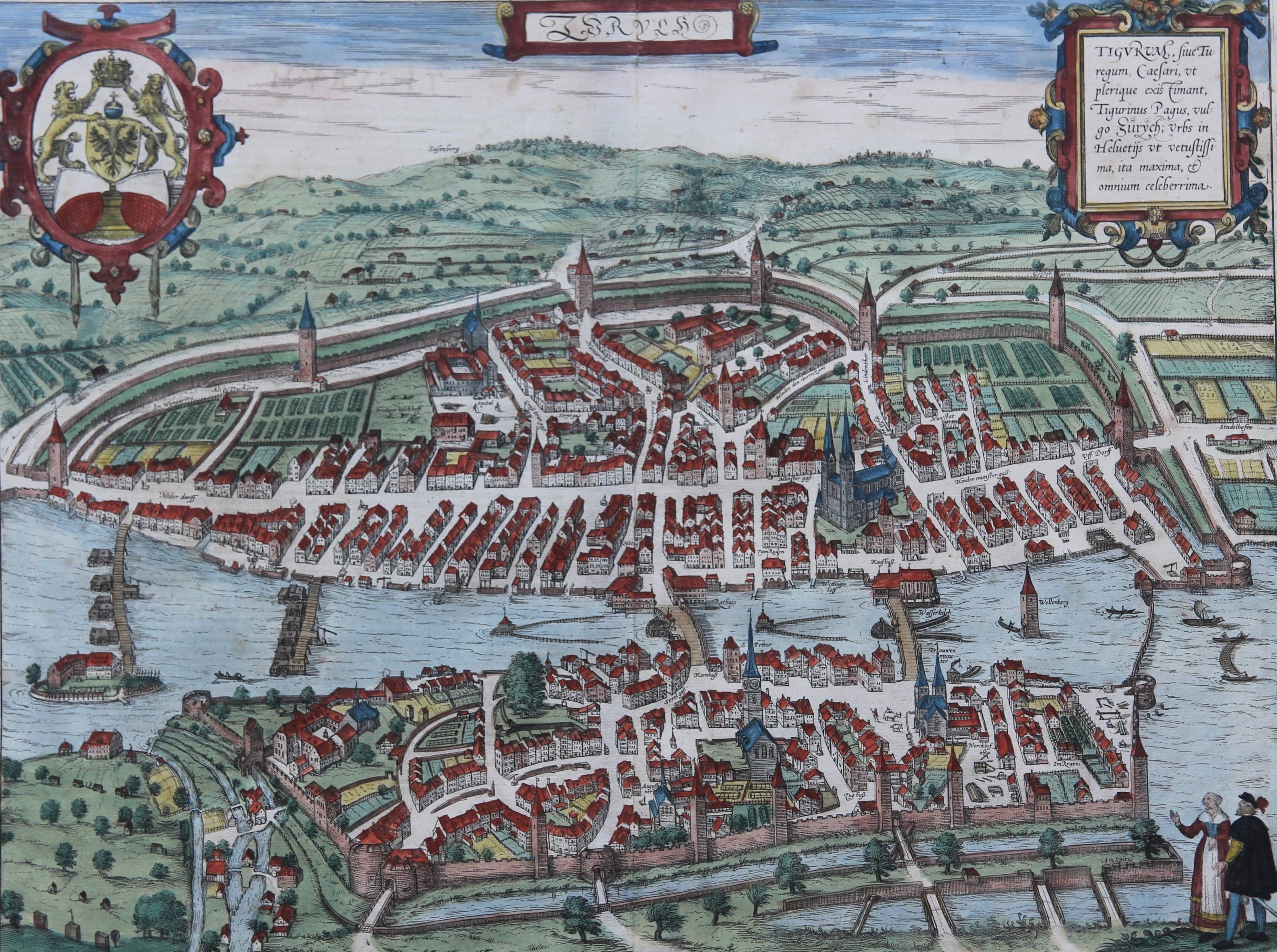
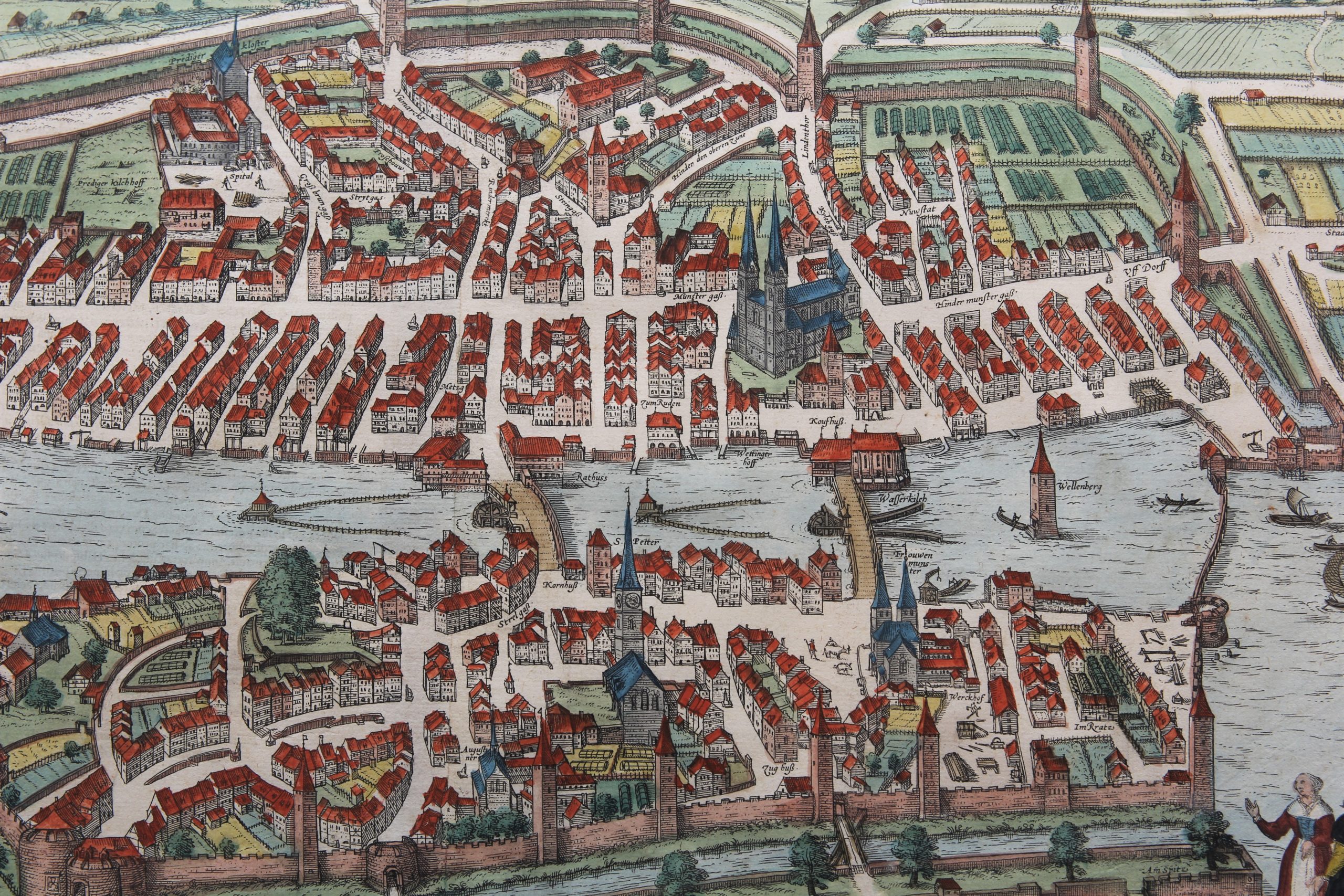
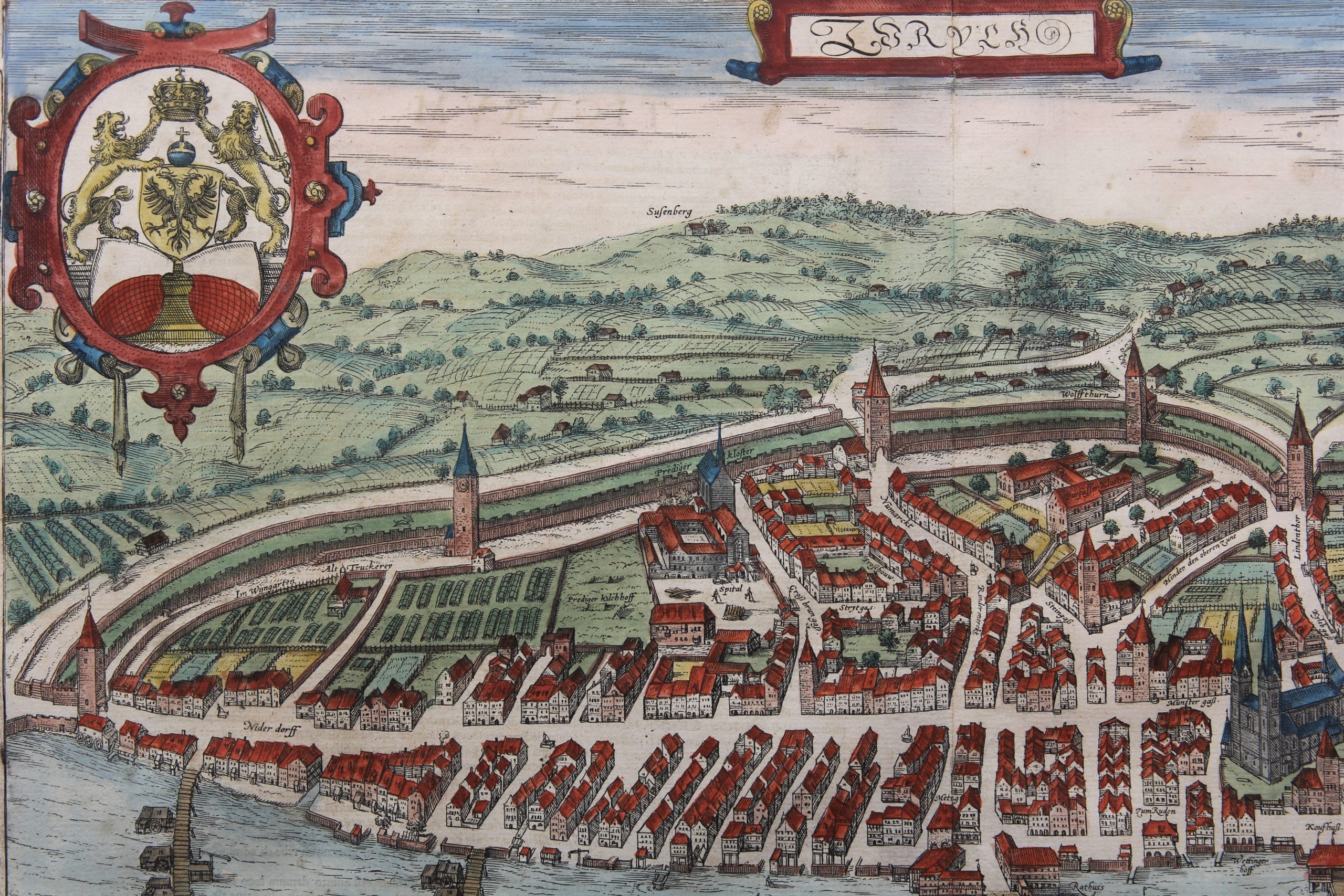
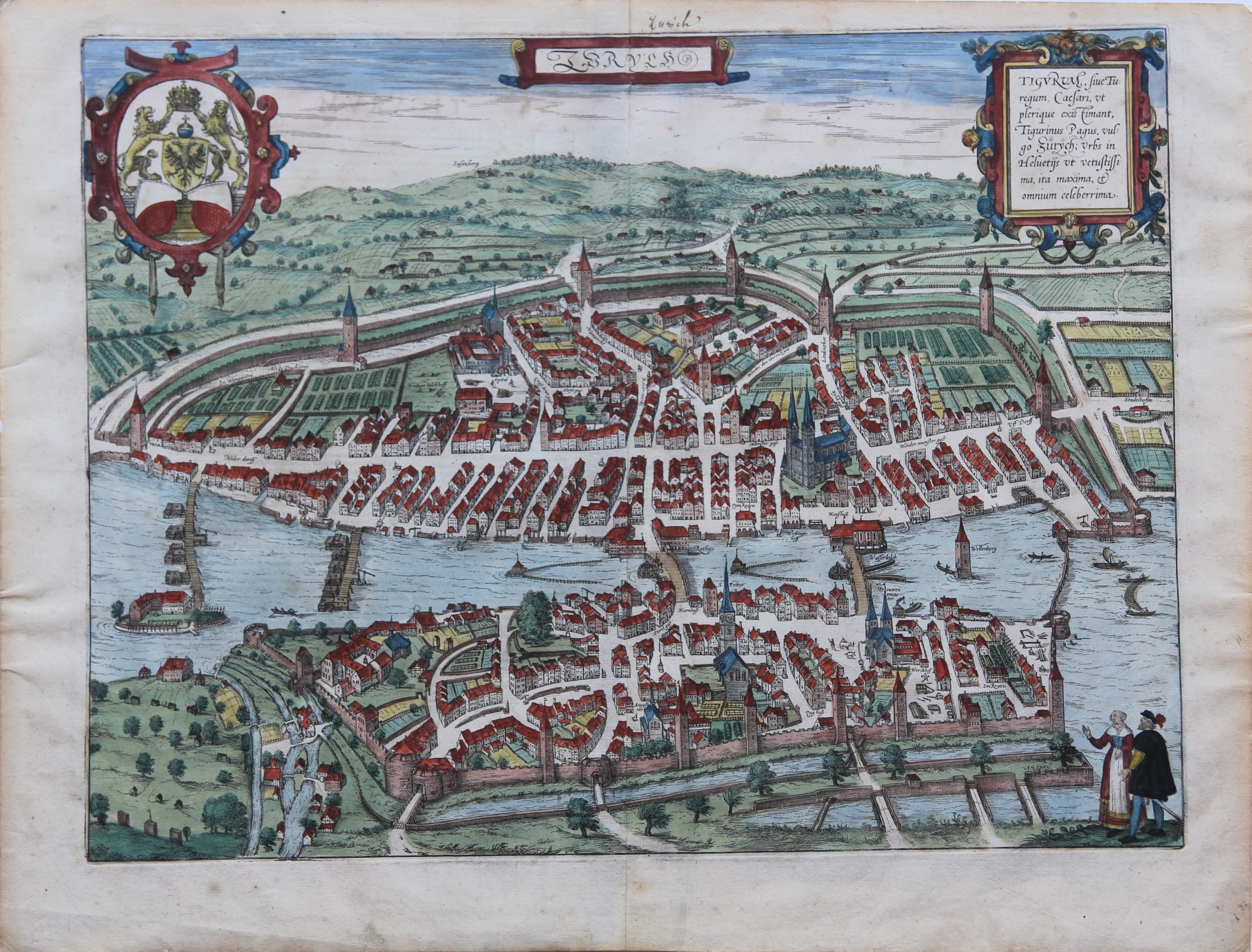
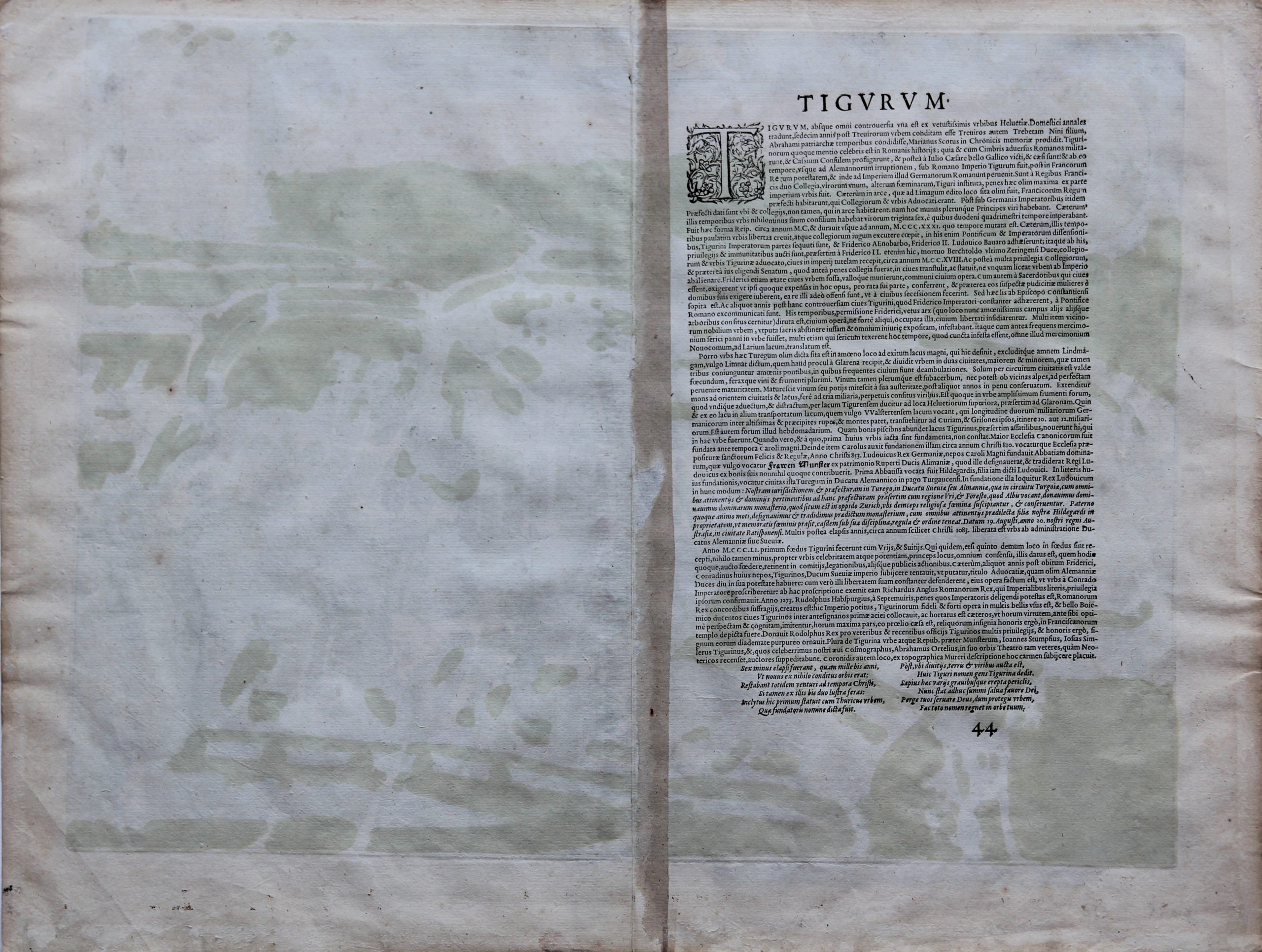
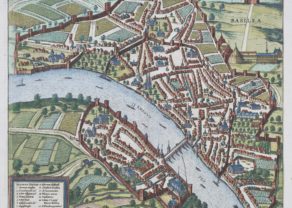
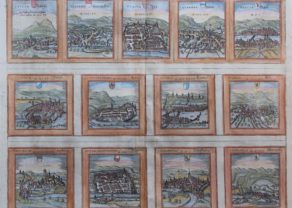
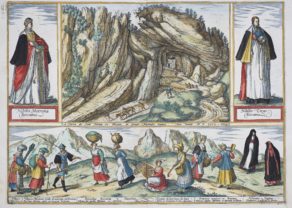
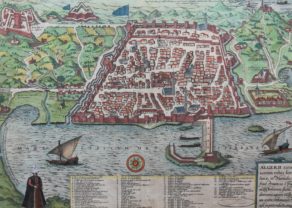
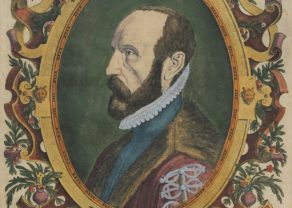
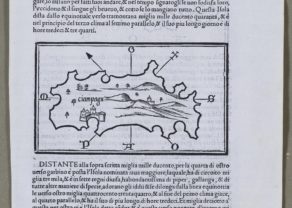
A tumultuous past
Notice the imperial eagle of this Habsburgian-free city, located on the Limmat and Lake Zurich (right). At the time of production of this map, the weapon was already outdated, because the citizens of the city had decided in 1351 to join the Swiss Confederation (originally signed between Uri, Schwyz and Unterwalden). The double ramparts dating from the mid 15th century when Zurichwas involved in a disappointing war against the members of the Cofederation.
In the early 16th century Zürich came under control of Ulrich Zwingli, who made it the center of his religious reformation. It was in the large Grossmünster (center right) that Zwingli could proclaim his religious theories. He lived here from 1518 to 1531, in which year his Bible was published. Zwingli died that year, during which Zürich was defeated in the second war of Kappel so that the cantons of Lucerne, Uri, Schwyz, Unterwalden, Zug, Friborg and Solothurn. remained Catholic.
The city is located at the River Limmat. One also notices the old Rathaus (late 17th century rebuilt in the same place) and in the right bottom the Fraumünster (with windows by Marc Chagall and now even with only one tower. The origin of the Fraumünster dates back to 853 when Louis the German built a church for his daughter.
Zurich is also known as a place for other freethinkers Lenin stayed here at the time of the Russian revolution and Dadaism was founded here.